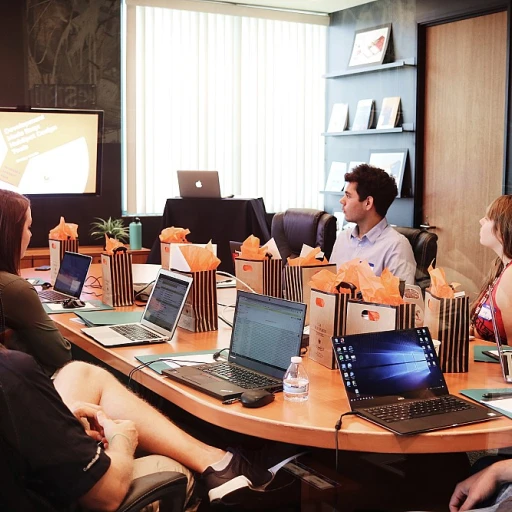
Understanding the Role of Mentoring in Professional Development
Exploring the Essentials of Professional Mentoring
Professional mentoring has long been recognized as a pivotal element in the growth and development of individuals within various career sectors. At its core, mentoring provides a structured yet adaptable framework wherein experienced professionals guide and support mentees in their career journey. This relationship is especially crucial in environments where students and early-career individuals, such as those involved in dual enrollment and concurrent enrollment programs, prepare to transition into more advanced stages of their professional lives.
With the growing complexity in sectors such as higher education, where dual credit programs and concurrent enrollment initiatives are becoming increasingly common, the role of mentors is to bridge the gap between academic settings like high schools and higher education institutes or community colleges. Mentors facilitate the application of academic learning in real-world scenarios, serving as a conduit for experiential growth. By fostering these skills, mentors ensure that mentees are better prepared to navigate professional environments post-graduation.
The importance of successful mentor-mentee relationships is underscored by the emphasis on accreditation and educational standards set forth by organizations like the NACEP. Their annual conference brings together educators and professionals from across the country, offering a platform for discussions on enhancing dual enrollment partnerships and refining mentorship approaches within these programs.
National conferences, such as those hosted by the NACEP, play a significant role in shaping the practices of professional mentoring. These gatherings facilitate the exchange of best practices, new methodologies, and innovations in educational and mentoring landscapes. As professional mentoring evolves, conferences become integral to understanding and implementing modern demands and expectations within mentoring programs.
Ultimately, the ability to integrate insights from such conferences into existing educational and mentoring frameworks directly impacts the quality and effectiveness of mentorship provided. As mentors and educational leaders continue to refine their approaches, the outcome is a more robust, informed, and supportive environment for students and aspiring professionals alike.
Challenges Faced in Professional Mentoring
Overcoming Obstacles in Mentoring Relationships
Professional mentoring is a crucial component of career development across various fields. However, it is not without its challenges. Recognizing and addressing these hurdles is essential to ensure the effectiveness of mentoring programs, especially in academic settings like colleges and universities. One of the key challenges in professional mentoring is the differing goals and expectations between mentors and mentees. For instance, in environments such as national conferences or educational institutions, mentors might focus on enhancing academic and career growth, while mentees may have immediate goals tied to specific credit programs or dual enrollment opportunities. This can lead to mismatched expectations and a potential drift in the mentoring relationship.- Communication Barriers: Effective communication is crucial. Mentees and mentors may come from diverse cultural backgrounds or have varied levels of experience, impacting how they communicate and understand each other's perspectives.
- Limited Access to Resources: Especially in programs like concurrent enrollment or dual credit initiatives, students might find a lack of resources that align with their educational and professional aspirations. Organizations need to regularly assess and update their resources to stay relevant.
- Logistical Challenges: Scheduling conflicts between mentors and mentees can hinder regular communication and progress. This is particularly prevalent in high school settings where students are balancing academic commitments with potential college engagements.
- Institutional Support: Mentoring programs require robust support from schools and higher education institutions. Without institutional backing, initiatives such as the NACEP national conference partnerships or early college programs can struggle with sustainability and impact.
The Influence of Conferences on Mentoring Practices
Enhancing Mentoring Approaches Through Conferences
Conferences play a pivotal role in shaping effective professional mentoring practices. They offer a platform for sharing insights, challenges, and innovations that can greatly benefit mentoring programs. The NACEP annual gathering stands out as a significant event that fosters such knowledge exchange. Attendees of the national conference, including educators from community colleges, high schools, and higher education institutes, participate in discussions on dual credit and concurrent enrollment programs. These conversations provide invaluable insights into enhancing credit programs, ultimately benefiting students aiming for dual enrollment and early college experiences. The NACEP National Conference not only promotes education on enrollment partnerships but also encourages networking opportunities for academic professionals. As these professionals join NACEP's efforts, they gain access to experiences and success stories from different parts of the nation, such as the successful implementation of dual credit programs. Discussions around topics like accreditation, credit registration, and concurrent enrollment practices enrich attendees' understanding, propelling them toward more effective mentoring approaches. Such shared wisdom and collective brainstorming can ignite new ideas and strategies to be integrated into existing mentoring programs. Moreover, the conference facilitates an exchange of best practices, encouraging alignment with national standards, and promoting partnerships, such as those at Buena Vista Lake and other renowned institutions. For more insights on maximizing career opportunities within these networks, explore this guide on leveraging conferences.Integrating Conference Learnings into Mentoring Programs
Transforming Conference Experiences into Mentoring Enhancements
Conferences like the NACEP Annual Gathering are pivotal opportunities for enriching mentoring programs. They offer a wealth of knowledge and networking possibilities that can be strategically integrated into professional development. Here's how to effectively channel conference insights into mentoring:- Collaboration and Networking: The interactions and connections established during the NACEP national conference can be leveraged to build stronger enrollment partnerships, particularly in credit programs. Engaging with professionals from various educational institutions, including community colleges and schools with dual enrollment or concurrent enrollment schemes, can provide fresh perspectives to enhance mentoring practices.
- Curriculum Enrichment: Insights gained from discussions around dual credit, higher education accreditation, and concurrent enrollment programs should be integrated into mentoring curriculums. These ideas can support the development of a comprehensive educational framework catering to both high school students and those involved in early college programs.
- Implementing Best Practices: By attending sessions or workshops on innovative credit program models, mentors have the opportunity to incorporate new strategies into their mentoring programs. This sharing of best practices helps ensure the continuous improvement of mentoring objectives aligned with academic and student needs.
- Promoting Institutional Goals: Delving into topics such as student education at conferences provides critical insights into institutional priorities. Mentors can use this information to align their guidance with broader educational goals, thereby fostering a cohesive educational environment that benefits all stakeholders.
- Feedback and Adaptation: Applying conference learnings involves continuous feedback and adaptation within mentoring programs. Regular review sessions can help assess the effectiveness of program modifications inspired by conference interactions, ensuring they stay relevant and impactful.
Case Studies: Successful Mentoring Programs Post-Conference
Significant Success Stories Post-Conference Integration
The blending of insights gained at the annual NACEP national conference and existing professional mentoring programs has led to considerable achievements across various educational settings. Here are some key examples illustrating the effective implementation of conference learnings into mentoring strategies:- Boosting Dual Credit Programs: By actively participating in conference discussions focused on best practices, several colleges have successfully implemented strategies to boost their dual credit programs. This has improved the quality of education provided to high school students, who can now earn college credits through well-structured programs.
- Enhancing Concurrent Enrollment Partnerships: Schools have leveraged the practical insights shared during the conference to strengthen concurrent enrollment partnerships. These enhanced partnerships have led to a smoother registration process and more effective accreditation systems, facilitating greater access for students.
- Integration of Technological Solutions: Adoption of cutting-edge technologies discussed at the conference has been a game-changer for many programs. For instance, the use of digital tools for enrollment management and student tracking has been widely embraced, leading to more seamless academic and program management.
- Strengthening Alliance Concurrent Network: Following collaborative workshops at the conference, many educational institutions have joined forces under a national alliance, creating a stronger network for tackling common challenges faced in student education and mentoring programs.
- Early College Experience Development: Some community colleges have greatly benefitted by integrating early college experiences into their curriculum. Inspired by models shared during the conference, these programs have successfully prepared high school students for higher education challenges, increasing the potential for academic success.












